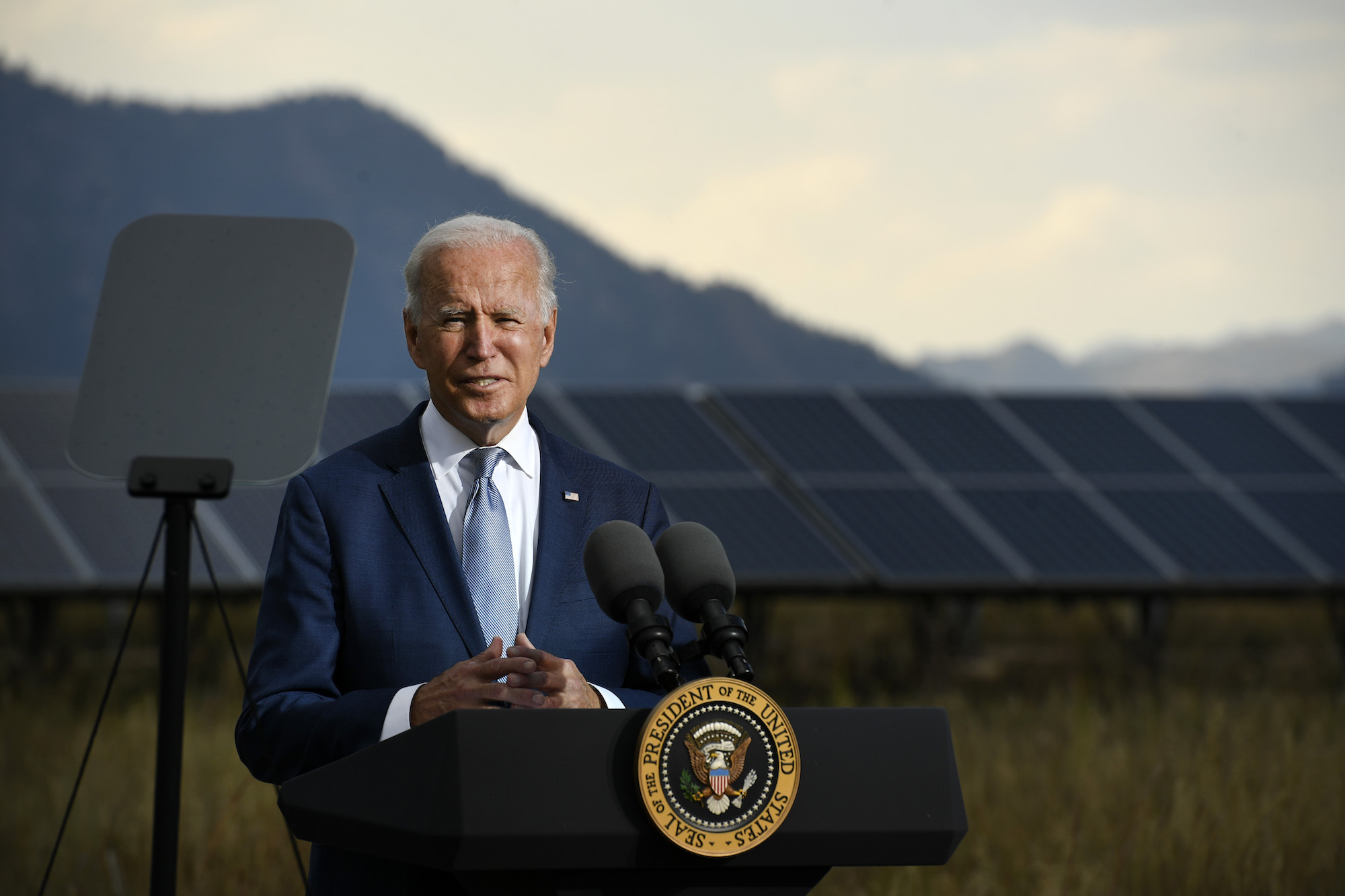President Joe Biden signed an executive order Wednesday instructing federal agencies to become carbon-neutral by 2050. The order includes a set of concrete goals to help decarbonize the government’s operations, buildings, and vehicles, from carbon-free electricity by 2030, to the purchase of all zero-emission vehicles by 2035, to eliminating greenhouse gas emissions from federal buildings by 2045, among other steps.
“As the single largest land owner, energy consumer, and employer in the Nation,” the executive order reads, “the Federal Government can catalyze private sector investment and expand the economy and American industry by transforming how we build, buy, and manage electricity, vehicles, buildings, and other operations to be clean and sustainable.”
With a spending budget of goods and services of $650 billion every year, the purchase power of the U.S. government has the potential to influence everything from the price of electric vehicles and batteries, for example, to pushing developers to embrace carbon-neutral construction.
The executive order “aligns the government’s enormous buying power with the nation’s climate goals,” John Bowman, managing director of government affairs at the Natural Resources Defense Council, said in a statement. “And it twins with the climate investments embodied in the Build Back Better Act to set the country on the path to achieve the carbon reductions we need.”
The order instructs federal agencies to cut greenhouse gas emissions by 65 percent from 2008 levels over the next nine years. It also requires that by 2030, the nation’s 300,000 government-owned buildings must be powered by carbon pollution-free electricity. At least half of that electricity must originate from local sources of clean energy. The U.S. government is currently the largest energy user in the country. The executive order also encourages agencies to authorize the use of their “rooftops, parking structures, and adjoining land” for new clean electricity generation and storage.
In addition to increasing their use of renewable power, Biden is ordering agencies to cut the greenhouse gas emissions of all their existing buildings, campuses, and physical installations in half over the next decade. By 2045, all federal buildings must be carbon neutral. To achieve this, agencies will have to renovate or retrofit existing buildings, taking actions like improving energy efficiency, or, in some cases, by installing solar panels and other carbon neutral technologies on their premises to achieve net-zero.
Newly-built facilities must also avoid carbon emissions. To help with that goal, the current administration will set the first-ever Federal Building Performance Standard, and will create a “Buy Clean” task force, which will identify highly polluting construction materials, like steel or cement, and then make recommendations to acquire lower-emissions materials.
The Biden administration is also tackling the federal government’s massive transportation footprint. The total fleet of the federal government accounts for about 600,000 vehicles, which includes trucks, cars, pickups, and vans. The executive order states that by 2027, all light-duty vehicles purchased by the government must be fueled by electricity and other non-emitting technologies. By 2035, all new vehicle acquisitions, including heavy-duty vehicles, must be completely zero-emissions, if they are available.
Republican leaders criticized the new executive order, arguing it could damage state and local economies reliant on fossil fuel production for jobs and revenue. “President Biden’s strategy is to destroy the economies of Wyoming, West Virginia and other energy-producing states,” Senator John Barrasso, the top Republican on the Senate Committee on Energy and Natural Resources, said in a statement. “With this action, he’s telling millions of Americans who provide most of the energy we use every day that he thinks they should be thrown out of work.”
Some left-leaning environmental groups, on the other hand, argued the order doesn’t go far enough.
The order comes two days after the release of climate-resilience plans by 20 national agencies, including the Department of Justice, NASA, Department of Transportation, and others. These plans will be complemented by annual progress targets that agencies must present to a new office inside the Council on Environmental Quality, or CEQ, which will review, approve, and track them.
“It’s a similar strategy to what China is doing so successfully, leveraging the purchasing power of their government to create demand that markets can meet,” Joshua Freed, senior vice president for climate and energy at Third Way, a centrist Democratic research group, told the New York Times.



